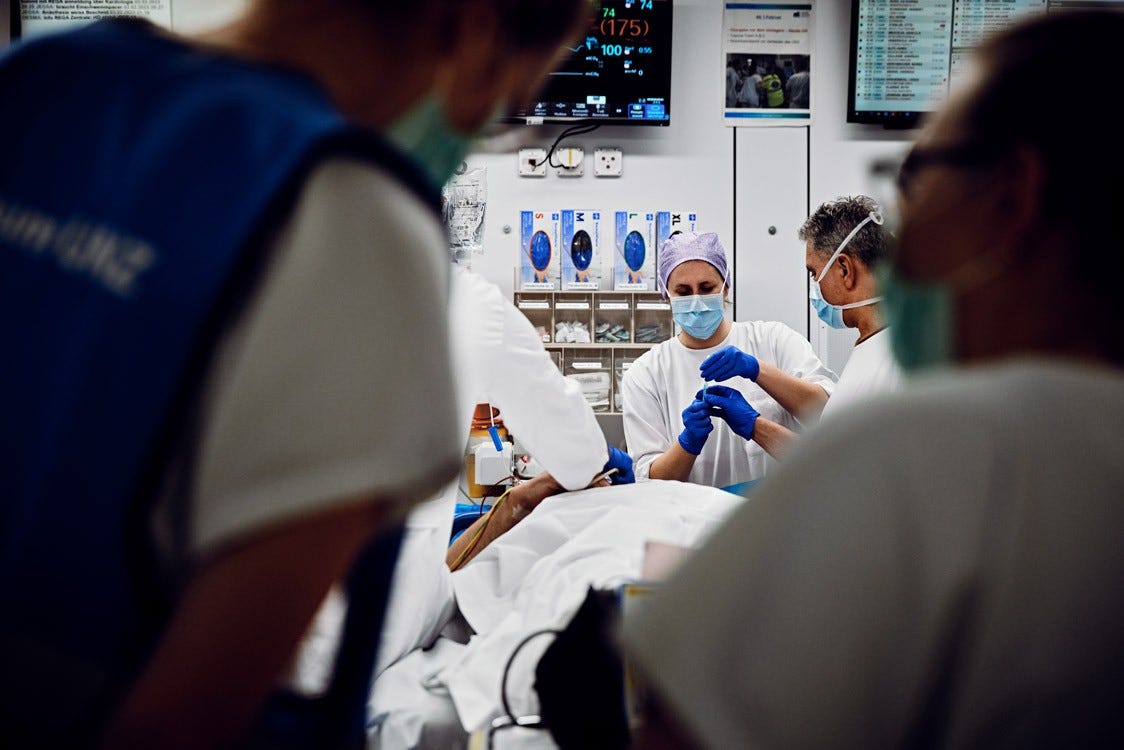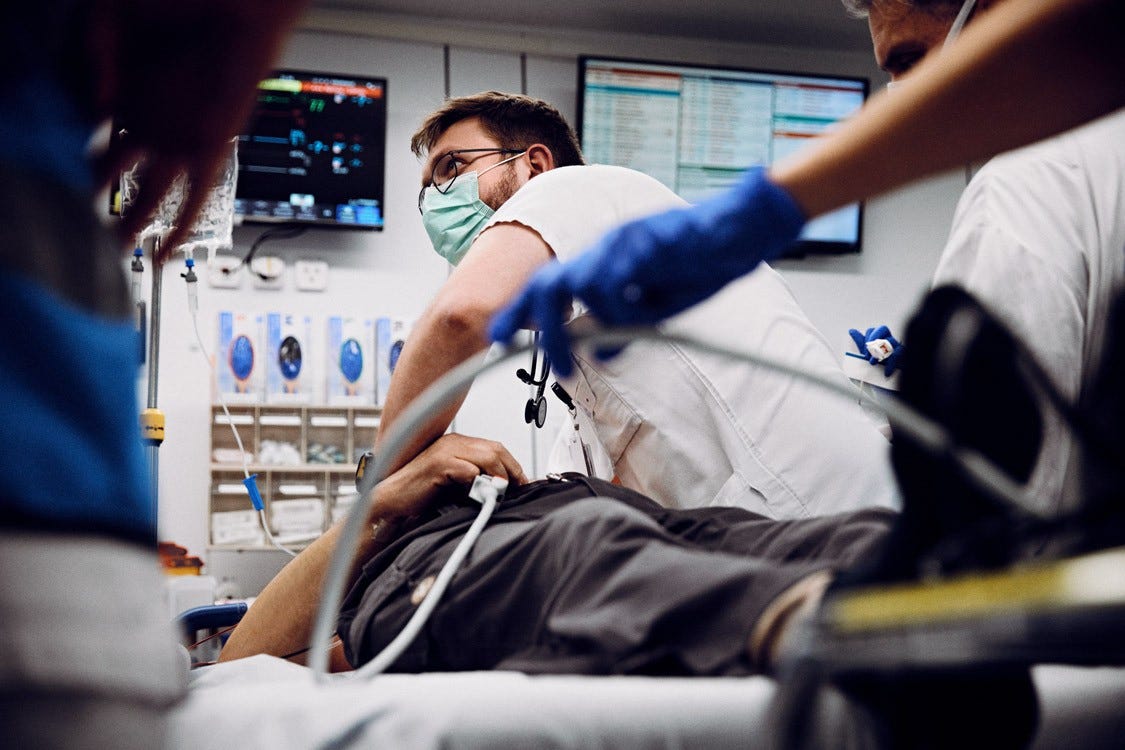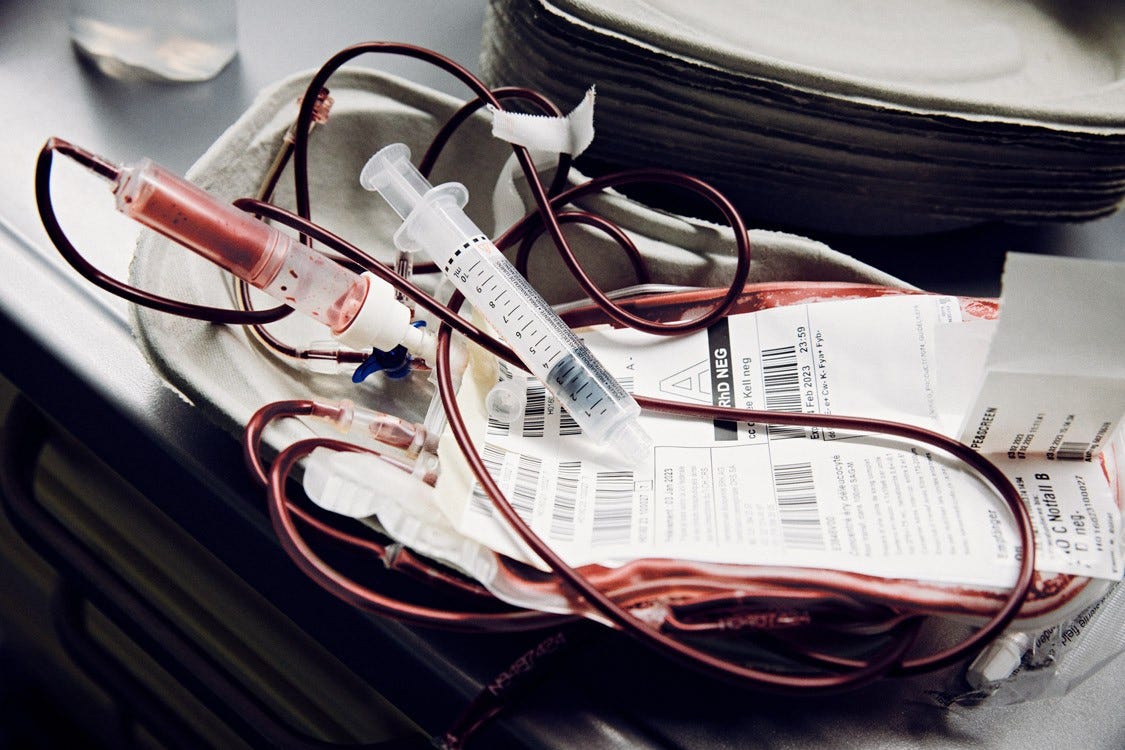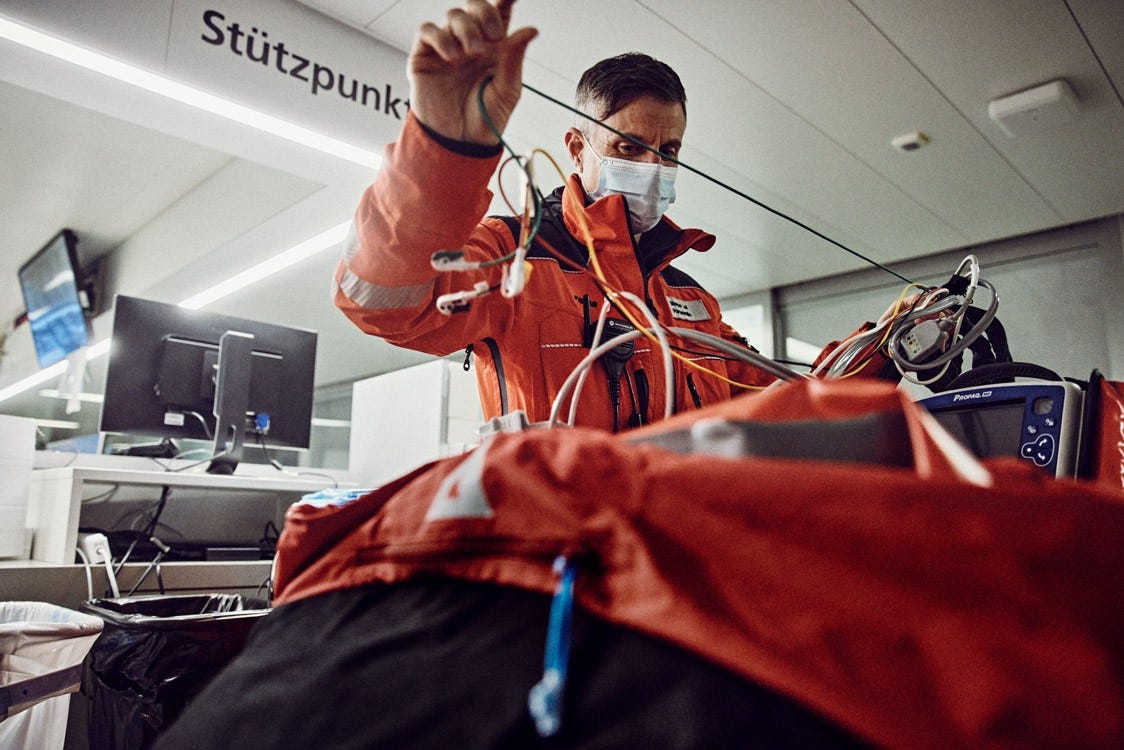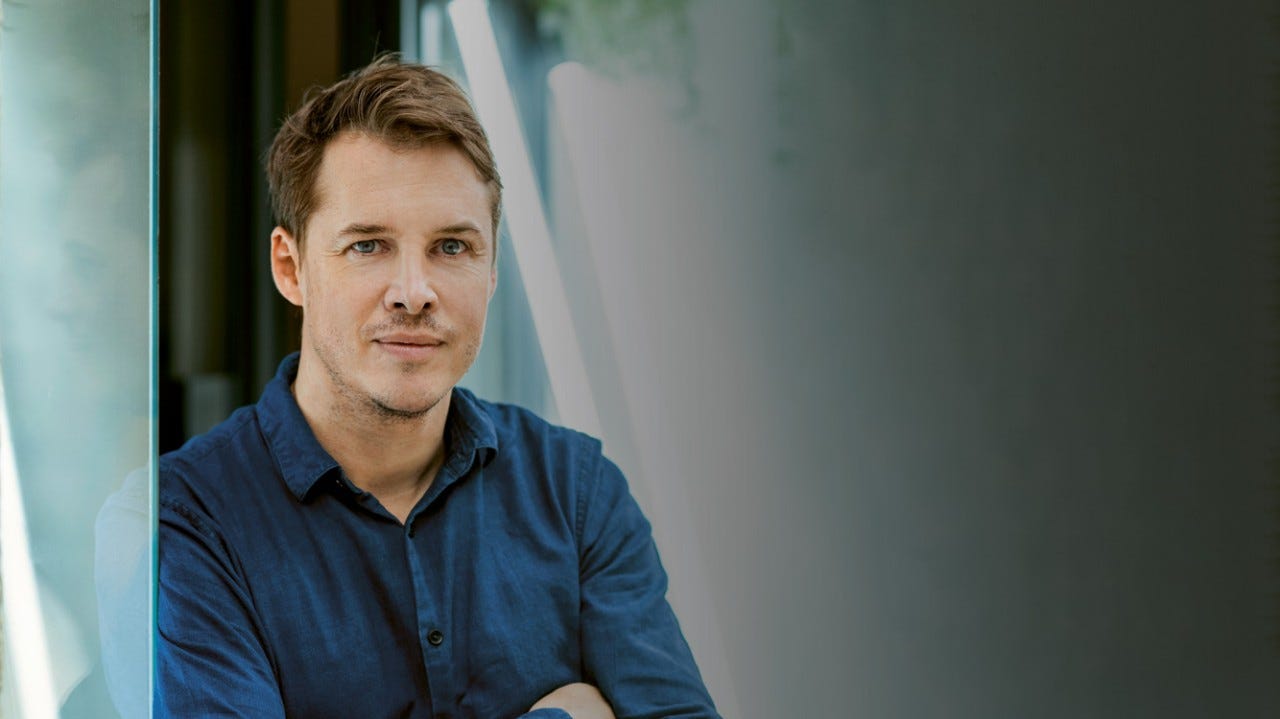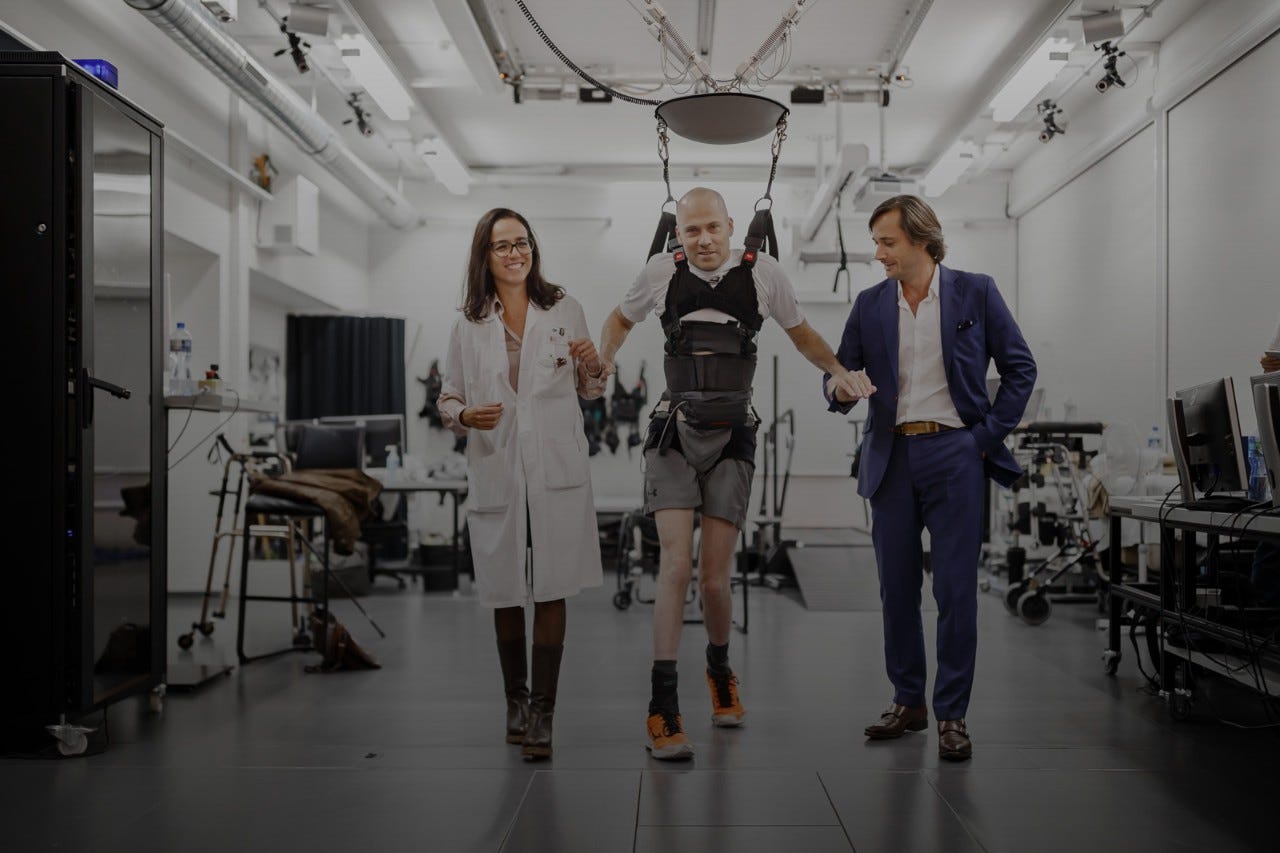Emergency care: decisions every minute
A look behind the scenes of the accident and emergency department at Bern’s Inselspital university hospital gives an insight into a fast-paced, complex world.
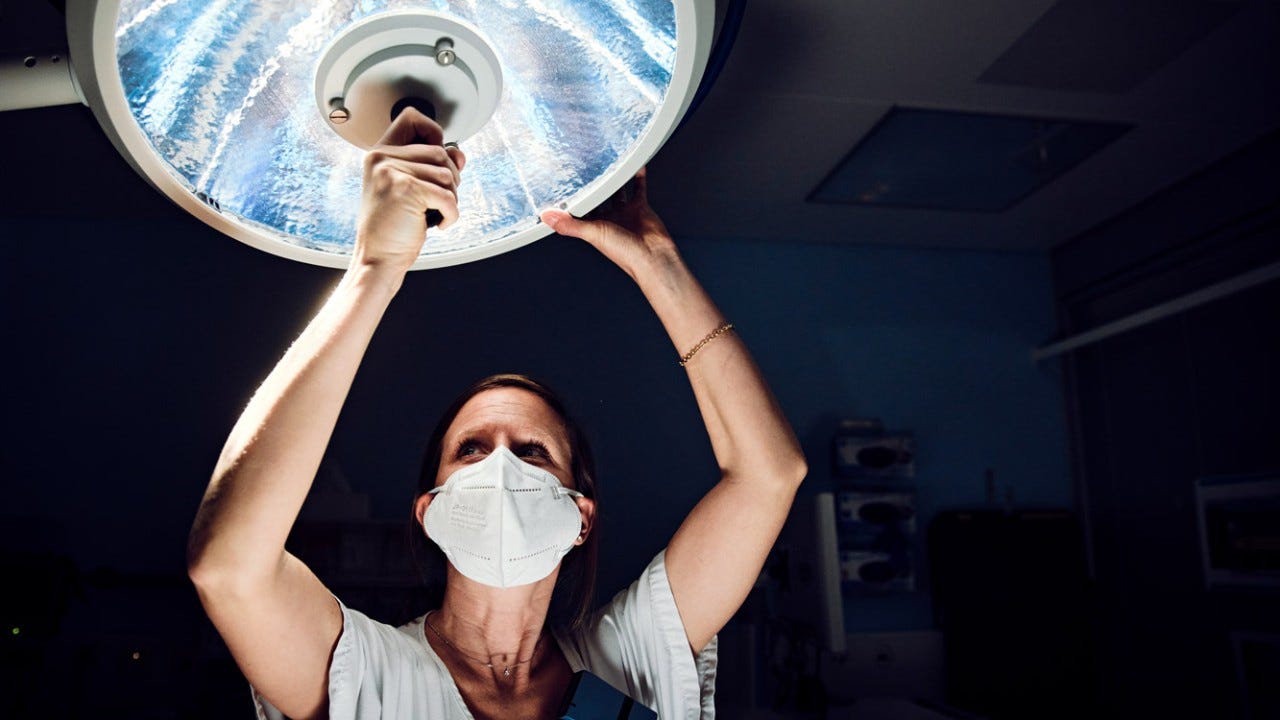
The patient is 33. He has suffered a head injury from a sports accident. The Rega air rescue service started intensive medical treatment 90 minutes ago and the patient’s condition is still life-threatening. He lies in trauma room 1 in A&E at Bern university hospital, surrounded by a team of doctors and nurses.
One of those present is Dr Sabrina Jegerlehner (38), the attending senior physician. She studies the hand movements of her colleagues. Her concentration is almost palpable, but she also seems fully in flow. Dr Jegerlehner has worked in A&E for seven years.
What demands does the job bring? Jegerlehner says she needs to be creative, flexible and stress-resistant. “You have to accept that things don’t always go perfectly to plan.” A colleague reports on the patient’s condition. He is stable and will soon be extubated, which means he will be taken off the respiration equipment.
So, what can you do about it? “This patient will be moved to the intensive care unit for monitoring,” says Jegerlehner.
Sudden shift from zero to a hundred
It’s 8 o’clock on a Friday evening. Visitors and day staff at the Inselspital have already left for the weekend. The corridors are deserted and the wards are quiet.
But the emergency department of the university hospital is poised, ready to spring into action as soon as the hustle and bustle of a normal Friday night gets under way. “This curve shows the expected workload,” says Jegerlehner, pointing to a red line on her computer. “We’re under the curve at the moment, so it’s relatively quiet. But things can suddenly get frantic from one moment to the next.”
In a matter of seconds, A&E can transform into a hive of activity, with life-threatening cases such as accident victims or heart-attack patients being prioritised according to the Swiss Emergency Triage Scale (SETS). The three trauma rooms, where patients with life-threatening conditions are treated immediately on arrival, are full within minutes.
Less acute cases, treated by staff in one of the 30 beds in the university hospital’s A&E department, have to wait. Cases deemed as minor injuries have to wait even longer – sometimes for hours. And yet the number of minor cases continues to rise: “People have forgotten how to handle ill-health,” says nursing unit manager Nicole Winkler. But it’s not only the minor cases that are increasing, with patient numbers rising from 38, 000 in 2013 to around 60, 000 a year today.
Security personnel are a common sight in A&E
This means extra beds, rooms and medicine. But also additional nursing staff and the need for patience from the increasing number of patients. “The stress on the system leads to swearing, aggression and assaults on a daily basis,” says Nicole Winkler. She is standing in the atrium of the university hospital’s A&E department, where security staff are a common sight.
Winkler has been organising the emergency ward and coordinating staff and resources for the last 12 years. She gets straight to the point: “The increasing violence is having a huge impact on the staff. We have to be careful not to lose our sense of empathy, otherwise we can’t do the job,” she sighs. The frustration is written on her face.
Nobody is sent home unseen
Jegerlehner explains that she and her colleagues are seeing more and more patients at A&E each year, and that is problematic. “We’re seeing lots of very sick patients since the pandemic and more older people are having heart attacks or strokes. The situation is exacerbated by the many cases where people come to A&E for minor medical complaints that would previously have been handled by their family doctor,” says Jegerlehner.
“We’re seeing people with a cold or a sprained ankle. On busy days, these cases really push us to the limit because we’re already short-staffed. But no one leaves here without being seen by a doctor, because once they pass through the door, they are classified as an emergency and treated as such.”
Jegerlehner’s mobile rings. It’s 9.30 pm. The Rega rescue service will deliver another patient in the next 30 minutes – a 58-year-old man who has twice been in cardiac arrest. “Now the pace is picking up again,” she says as she heads to the 30-bed ward.
Sports injuries in A&E: respect but no fear
Patients with serious but not immediately life-threatening conditions are monitored here. One of these patients is 22-year-old Jamie from Zollikofen. He is lying in semi-darkness with a cervical collar and vacuum mattress fixing his spine in place.
He was flown in two hours ago by the Rega team from the Gran Masta ski-jumping park in Adelboden. “The jump was icy. I slipped when taking off and landed on my back.” The diagnosis: fracture and displacement of the fifth cervical vertebra. The nurse told Jamie that if the vertebra shifts any further, he could be permanently paralysed or could even die.
Sports injuries also give senior consultant Jegerlehner food for thought. It is 10.30 pm and she’s about to go off shift. “My work does make me more wary of sport. But it’s important not to let your work make you too anxious,” she says as she hurries to hand over her shift.
In the end, she doesn’t end up leaving on time. The handover is important as is it ensures that patients continue to receive the very best care. “You start coordinating again, an emergency arrives, and then you don’t want to dash off and leave the night shift staff run off their feet from the outset. No one likes to go home beforehand.”
